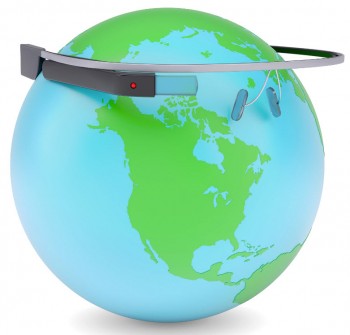The Lutetia model of the wearable technology has been engineered with a gender specific appearance and function.
The Omate Lutetia is a smartwatch that has taken a unique design strategy when compared to some of the large name rivals in this category such as Samsung and Apple, because the company has decided to come up with a gender specific function and form.
This particular model of wearable technology device was intentionally created with women in mind.
The smartwatch category is rapidly growing in the number of players, but the majority of those that have already been designed have placed themselves in a type of standard “unisex” category. That said, the appearance of these gadgets remains one of the primary complaints that have been made about them and has been blamed for some of the struggles in consumer adoption that have been faced within this category.
The Lutetia model of smartwatch is trying to break away from what it feels is an awkward standard design.
The Lutetia wearable technology design recognizes that the products currently on the market are “great for men, could be worn by a woman.” It is hoping to stand out by taking on a bold strategy that says that there is no need for an exclusively male focused approach to the design of these products. It has come up with the design for women, first, because that is the category that has had the least specific attention since the creation of the wearables category.
This new device has an elegant round interface, not entirely unlike the Moto 360 from Motorola. This mobile device is priced for pre-orders at $169, which is quite competitive within the category. It is expected to become available for delivery before the end of the year. The size of the watch face is 1.5 inches, which is a reasonable within this ecosystem, particularly for the feminine style. It makes the watch face smaller than that of the Moto 360.
The smartwatch from Omate may be designed, in this case, for women, but it has also stated that there will be another model released for men in the not too distant future.
Those enrolled at the Center for Advanced Technical Studies are trying out various forms of technology.
The Center for Advanced Technical Studies in Lexington County, South Carolina is not a typical high school experience, particularly now that students there are learning through the use of high tech gadgets ranging from Google Glass to robots and drones.
Students in the school do not receive the traditional type of classroom education, but are surrounded by tech.
While in some schools, kids would be punished for throwing paper airplanes, in this one, they are encouraged to do it, particularly when they are comparing the various aspects of those planes to that of flight simulators. It is all a part of the lessons in this school that is also pioneering one of the hottest new technologies on today’s market: Google Glass. Those augmented reality glasses that are connected to the internet and essentially work as a mobile device that is worn on the face.
Students have been quite enthusiastic about being able to try out Google Glass for a hands on experience.
 According to aerospace engineering class senior, William Blanks, “I wish I was able to take more classes like this.” That is one of the courses that uses augmented reality wearable technology as well as other tech such as flight simulators and drones, as a part of its regular curriculum. Blanks went on to say that “This gives us hands-on technology that’s actually useful in the real world and lets us do real-world scenarios. … It’s amazing that we have all this.”
According to aerospace engineering class senior, William Blanks, “I wish I was able to take more classes like this.” That is one of the courses that uses augmented reality wearable technology as well as other tech such as flight simulators and drones, as a part of its regular curriculum. Blanks went on to say that “This gives us hands-on technology that’s actually useful in the real world and lets us do real-world scenarios. … It’s amazing that we have all this.”
The Center gives priority to creation and innovation, when it comes to its budget. Its classrooms have technologies that range from the latest in tractors from John Deere for its agriculture science program, to a media technology program that has a video editing lab and production studio. Now, the augmented reality glasses – which come with a price tag of $1,500 each – have been brought into the aerospace engineering classes.
That said, while the Google Glass use is starting in aerospace engineering, the goal is to bring the devices into every classroom in the school.

 According to aerospace engineering class senior, William Blanks, “I wish I was able to take more classes like this.” That is one of the courses that uses augmented reality
According to aerospace engineering class senior, William Blanks, “I wish I was able to take more classes like this.” That is one of the courses that uses augmented reality 